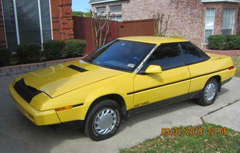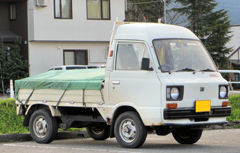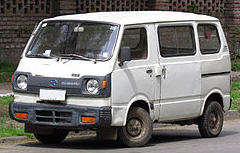The 1980's Subaru
1980's Subaru Timeline:
1980-84 Subaru advertises as the Ski Car. These models were made 1980-1984 as Subaru starts a 5 year product cycle.
1983 Subaru sells it's 1,000,000th car in the US.
1985-1989 New GL/DL, RS, and XT models introduced, Hi/Lo dual range 4x4 is optional.
1986 full time All Wheel Drive offered on certain models, the part time system available through 1989.
1987 Subaru offers All-Wheel-Drive automatically varying the power delivered to wheels (Audi's Quattro system introduced in 1980).
In 1980 Subaru was gaining traction. Drivers knew they could expect both performance and economy from Subaru, and Subaru designers continued to push the design envelope. At the same time, America was adapting to the rapid advance of home computers that were, by the year, smaller, faster, better. Subaru followed suit. The 2nd generation Rex was released. The rear-engine, rear-wheel drive platform that had been a mainstay from the Subaru 360 was changed to a front-engine, front-wheel drive platform. This move helped to overcome issues related to interior space, giving it a wider wheel base and the largest body size at the time in the minicar class. The Rex Combi name was given to the model with a light van body that was popular at the time.
The "Sambar Try" was released as a minivan model in September 1982, and while the 4-wheel independent suspension system remained the same, the front suspension layout in 4WD models of the 4th generation Sambar were changed from semi-trailing system to a Macpherson Strut system (semi-trailing system continued to be used for 2WD models). 10-inch tyres were used for all 2WD models, and 12-inch tyres for all 4WD models (with all models featuring large 4-wheel drum brakes). The ultra-low EL gear was defined for 4WD models. Trucks came with the High Roof option regardless of whether they were 2WD or 4WD, and while no automatic transmission was available, The Try FL and FX came with an automatic gearbox.
The Subaru Domingo one-box wagon made its debut in October 1983. This series not only accommodated seven passengers in a compact body but also offered a variety of seating arrangements thanks to Japan's first swivel seats, together with folding seats. The XT Coupe was released in 1986 as a technically advanced model. Its sweeping design evoked the image of an eagle and earned the distinction of the world’s most aerodynamic car. The New York Times was impressed enough to call it “the ultimate in jazzy design.” It was quite a departure from Subaru’s “cheap and ugly” entry into the American market 20 years earlier.




